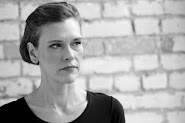
 What led Billie Holiday to move from Baltimore to New York?
What led Billie Holiday to move from Baltimore to New York?At age 12, Billie—or Eleanora as she was known then—had the body of a woman. She gravitated to the night life, singing in afterhours spots, drinking bootleg liquor, smoking then-legal weed, and getting roughed up by older men. To protect Billie, her caretaker urged Sadie to come get her daughter. Sadie arranged for Billie to join her in Long Branch, New Jersey. But Billie rode to New York instead, determined to see Harlem. Picked up by a social worker, she stayed in a children’s home until someone could pick her up. After Billie got fired from the maid job that her mother had arranged, she and Sadie moved to New York—just as the Harlem Renaissance was fading into the Great Depression.
From “Love for Sale”
Harlem was no Promised Land;
it was a sea of black folks, striving
to rise from fields to factories
or from hard-luck to street hustles,
flowing through clubs and churches
grooving on Jesus and jazz.
Harlem was a black sea that parted
each night for white partygoers
with money to burn and cares to shed.
I was swept by the tide.
"When I was growing up, I was intrigued by the Harlem Renaissance. I was introduced to the poetry of Langston Hughes in elementary school and have loved it ever since. Hughes even wrote a poem entitled 'Song for Billie Holiday.' "
Harlem Renaissance links:
http://www.jcu.edu/harlem/index.htm
Hear Carole Boston Weatherford read poems from Becoming Billie Holiday:













No comments:
Post a Comment